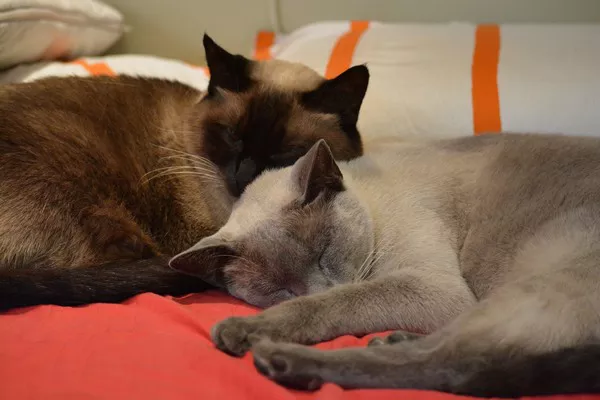The love of music is a shared experience among many humans, but have you ever wondered if your feline friend shares your appreciation for melodies? The question of whether cats like music has intrigued cat owners and researchers alike. While it may seem challenging to decipher a cat’s musical preferences, experts have conducted studies and observations to shed light on this fascinating topic. In this article, we’ll explore the relationship between cats and music, what science suggests, and ways to create a harmonious environment for your furry companion.
Understanding a Cat’s Sense of Hearing
Before delving into whether cats like music, it’s crucial to understand a cat’s sense of hearing. Cats possess a remarkable sense of hearing, with the ability to detect sounds at frequencies ranging from 48 Hz to 85 kHz, significantly surpassing the human range of 20 Hz to 20 kHz. Their keen auditory perception is essential for hunting, communication, and detecting potential threats.
Cats are particularly sensitive to high-pitched sounds, making them attuned to subtle noises, such as the rustling of prey or the chirping of birds. This heightened sensitivity to sound may also explain their sometimes skittish behavior in response to unexpected noises or loud sounds.
Do Cats Have Musical Preferences?
While cats may not have specific musical preferences, they do respond to sounds and music in their environment. Research in this area has yielded intriguing insights into feline reactions to different types of music:
1. Classical Music: Some studies have suggested that classical music, characterized by its soothing and melodic compositions, may have a calming effect on cats. In one experiment conducted by researchers at the University of Wisconsin, cats exposed to classical music appeared more relaxed and less stressed in a shelter environment.
2. Species-Specific Music: Music designed specifically for cats has gained popularity in recent years. Composers have created music with frequencies and patterns that mimic the sounds of birds and rodents, which can capture a cat’s attention and stimulate their natural instincts.
3. Human Music: Cats may respond to human music, but their reactions vary widely. Some cats seem indifferent to music, while others may exhibit curiosity or playfulness when music is playing. It’s essential to note that individual cat personalities play a significant role in their responses.
Factors Affecting Feline Musical Preferences
Several factors can influence a cat’s response to music:
1. Individual Personality: Just like humans, cats have distinct personalities. Some may be more receptive to music, while others may be indifferent or even stressed by certain sounds.
2. Volume and Intensity: The volume and intensity of the music can impact a cat’s reaction. Loud or jarring music may startle or stress a cat, while softer, soothing tunes may have a calming effect.
3. Timing and Context: The timing of music exposure matters. Cats may respond differently depending on their mood and the context in which the music is played. Playing calming music during a stressful event, like a visit to the vet, may help soothe a nervous cat.
4. Environmental Factors: The cat’s environment, including the presence of other pets, noise levels, and overall comfort, can influence their receptiveness to music.
Creating a Cat-Friendly Musical Experience
If you’re interested in introducing music to your cat’s environment, here are some tips to create a cat-friendly musical experience:
1. Experiment with Music: Play a variety of music genres and observe your cat’s reactions. Pay attention to whether your cat seems more relaxed, curious, or playful with specific types of music.
2. Classical and Species-Specific Music: Consider playing classical music or species-specific cat music during quiet times or when you’re away from home to create a soothing atmosphere.
3. Volume Control: Keep the volume at a comfortable level to avoid startling or distressing your cat. Remember that cats have sensitive ears.
4. Interactive Play: Use music as a backdrop for interactive play sessions with your cat. This can help strengthen the bond between you and provide mental and physical stimulation.
5. Calming Effects: If your cat experiences stress or anxiety, such as during thunderstorms or vet visits, try playing calming music designed for cats to help alleviate their discomfort.
6. Monitor Reactions: Pay attention to your cat’s body language and behavior when music is playing. If your cat seems agitated or anxious, consider adjusting the music or providing a quiet space.
7. Individualized Approach: Every cat is unique, so tailor your musical choices to your cat’s preferences. What works for one cat may not be the same for another.
Conclusion
The relationship between cats and music is a multifaceted and intriguing subject. While cats may not have specific musical preferences, they do react to sounds and music in their environment. Some cats appear to be more responsive to soothing music, while others may show interest in species-specific compositions designed to mimic natural sounds.
Ultimately, the key to creating a harmonious musical experience for your cat lies in understanding their individual personality and sensitivities. By observing your cat’s reactions and tailoring the music to their preferences, you can enhance their environment and provide a more enjoyable and comfortable atmosphere for your feline companion.



























